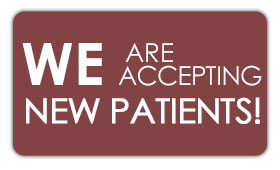Iliotibial band syndrome (ITBS) is one of the top 10 injuries experienced by long-distance runners and one of the leading causes of outside knee pain in all runners. The iliotibial band (ITB) is a thick band of fascia (fibrous connective tissue) on the outside aspect of the thigh and knee, that begins as a muscle (tensor facsia lata) before turning into the ITB. It extends from the pelvis, crosses over the hip and knee, and inserts just below the knee. The primary function of the band is to stabilize the knee during walking and running, as well as to move the thigh and leg outward (abduction).
The function of the muscles inserting into the ITB (Tensor Fascia Lata and gluteus medius) is to abduct the leg. Research has shown a strong association between a weak gluteus medius muscle and individuals affected with ITB syndrome. The weakness of the gluteal muscles causes more tension to develop in the iliotibial band as the muscles inserted into it assist in keeping the hips level. When the hip abductors (gluteus medius) are weak, the tensor fascia lata must contract harder and over a long period of time, this causes excessive straining of the ITB. These weak hip abductors are frequently part of a commonly seen pattern of weak core muscles, which leads to a muscular imbalance. On longer runs, and when you begin to increase the length of your runs, your hip abductors can become fatigued. In order to accommodate the increased work load, they may require the added assistance of the muscles which attach into the ITB. This sequence of events may lead to increased tension in the ITB, which can cause injury. Strengthening the hip abductors and stretching the ITB, including the structures which attach to it, are usually necessary to begin recovering from this problem.
The symptoms of Iliotibial band syndrome range from an aching, stinging sensation just above the knee joint, to a swelling or thickening of the tissue in the area where the band moves over the femur. Many patients complain of the stinging sensation just above the knee joint, on the outside of the knee , or along the entire length of the iliotibial band. (outer thigh) Pain may not occur immediately during activity, but may intensify over time. Pain is most commonly felt when the foot strikes the ground and may persist after activity. Pain may also be present above and below the knee, where the ITB attaches to the tibia (lower leg). It can also occur if you twist your knee, like when you turn a corner.
Possible causes of iliotibial band syndrome include; a weak hip abductor muscle, muscular imbalance, weak core muscles, sudden increase in mileage, increase in track or interval training, crowned running surface, tight hip capsule and/or tight latissumus dorsi and back muscles.
The diagnosis of ITB syndrome can usually be made without any complicated tests. Your doctor will inquire about possible causes of the problem and ask about any past injuries. X-rays may be taken to make sure that there are no other injuries that could be adding to the problem. Generally, no swelling is visible.
Treatment of ITB may include chiropractic adjustments to improve the joint function of the low back, pelvis, hip, knee and ankle. This can help to improve the symptoms at the knee. Chiropractic care primarily addresses the soft tissue structures that affect the IT band. Foot orthotics may be recommended to improve foot and lower limb alignment. Kinesiotape can also provide beneficial treatment for ITBS. Another treatment option for ITBS is NSAIDs, which reduce pain and swelling. In chronic cases, that have not responded to conservative care, corticosteroid injections may be warranted. In rare cases, surgery may be performed to release the tension of the IT band over the lateral knee.
Some recommendations for reducing Iliotibial Band syndrome include 1) a temporary decrease or cessation of training in order to promote healing. 2) Side Stretching; which will help decrease tight musculature. 3) Strengthening the hip abductors, especially the gluteus medius, which is critical in the long term treatment of the condition. 4) Gentle foam rolling (not too hard a roller and not too painful) helps release restrictions and mobilizes muscles. 5) Avoid crowned surfaces or too much running around a track.

 I grew up in Dayton, Ohio and completed my chiropractic education at Logan College of Chiropractic in St. Louis Missouri. After graduating chiropractic school I moved to Nashville. I have practiced in Nashville for 10 years and Nolensville for over 7 years. I enjoy spending time with my family, dogs, golfing, kayaking, watching college sports and being an active member of the Nolensville community and serving its health needs.
I grew up in Dayton, Ohio and completed my chiropractic education at Logan College of Chiropractic in St. Louis Missouri. After graduating chiropractic school I moved to Nashville. I have practiced in Nashville for 10 years and Nolensville for over 7 years. I enjoy spending time with my family, dogs, golfing, kayaking, watching college sports and being an active member of the Nolensville community and serving its health needs.